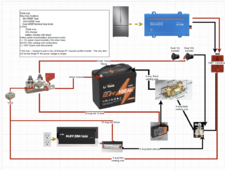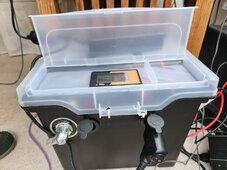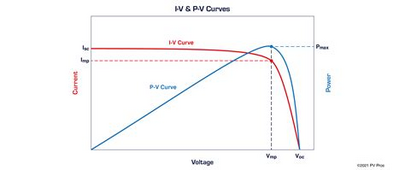GXMnow
Solar Wizard
- Joined
- Jul 17, 2020
- Messages
- 2,734
okay, need bms.. check.. but do i really need to buy 4 batteries and bms and cables and fuses ? just to run a pc and lcd monitor (and possibly a tiny fridge) during daylight hours ???
did nobody read the part i mentioned about trying to bring back THIS battery i have back to life ???using epsom salts/distilled water and a trickle charge.. i imagine that will be a hell of alot cheaper than 4x 3000 peso batteries ...and bms, wtv that is...and other things, why cant i just repair the infastructure that i already have here ?... OR... the other thing i mentioned twice... link 4x 3.2volt lithium batteries in series.. that there has slightly more capacity than a 100ah battery.. and apperantly is alot safer... just to make 1 x12v battery...
or why cant i just get a 12 to 24volt inverter.. if my battery voltage sits in between... wont it turn on anyways ? i just want power to flow from the solar panels to the 12v power bank to ups battery.. and from there it should harmlessly power a pc a monitor and who knows, maybe a tiny fridge ?
The power output of solar panels is not consistent. The battery is needed to stabilize the voltage under varying load. To be safe, the battery must be able to accept the maximum current the solar panels can produce. This can happen if you are not drawing a load near noon. And the battery also needs to be able to supply your maximum power draw because you can lose output from the solar panels from a shadow due to a passing cloud or even an airplane. A decent battery is important.
I didn't address reviving your battery because it does not work. We have told you several times, it's done. You need a new battery.
You need an inverter that runs at the correct voltage for the battery in use. Just because you pulled the battery voltage up to 18 volts does not mean it will run an 18 volt inverter. The battery is not capable of supplying any current at that elevated voltage. It is up there because the battery is shot, dead, ruined, no more. Once there is any load on the battery the voltage will drop like a rock.
If you get a good quality MPPT charge controller, it will regulate and hold it's output voltage at the absorb then float voltage settings. That could run an inverter as long as the light on the panels is enough to make more power than you are trying to use. But again, if the battery can't maintain the voltage, it will shut down as soon as there is any shadow on the solar panels. Every decent charge controller says to have a good battery connected BEFORE you connect the solar panels. The reason is so the charge controller has somewhere to send the energy. If you are only going to run things when the sun is shining, you don't need a very large battery, but it still needs to be able to handle the currents. Lead acid batteries are horrible as they can only handle a 0.1 or maybe 0.2C charge rate. So a 100 amp hour lead acid battery maxes out at just 20 amps of charge current.
The Lithium LFP battery shown by @robbob2112 above can take 60 amps in and put out 100 amps. It has the BMS already inside the battery. If something goes wrong, like wrong settings or a failed charge controller, it will protect itself and save the cells.
Having a weak battery can actually damage the inverter. Electrons move fast. An inverter making 50 or 60 Hz AC power is actually having to pull current then not pull current at double those frequencies, so 100 or 120 times a second, the load is going from nearly double the output power to no power. The power source (THE BATTERY) needs to be able to hold a steady voltage while that load current is constantly changing. This is called "Ripple Current" and again, Lead Acid batteries are bad at that. And with a charge controller, it get's even worse as it is actually switching from charging to discharging at the double the AC frequency rate. All inverters have some filter capacitors to help smooth this out, but the bulk of it still ends up at the battery. This issue is not as bad with high frequency inverters as they have a second stage of filtering, but the ripple is still there. My large low frequency inverter shows near the full AC load power as AC current ripple at the battery input.
What battery is in your UPS?
If you get a quality MPPT charge controller, and set it to the correct battery settings, it would be far more efficient to have it directly charge the UPS battery. Then you are only doing 1 conversion from DC to AC to run your loads. What you have been asking for is the take DC charging a damaged battery, then run an inverter to make AC, to then charge a UPS battery, converting to DC, then the UPS inverts it back to AC again. That is a lot of losses.
The solar panels you showed are not what they claim to be. They are fake labels and maybe 50 watts each, 100 if you are really lucky. And in the real world, you might be getting even less power if the panels are not at ideal angles. You are probably making less than 1,000 watt hours a day, even when the sky is clear and sunny. I showed you my array. The 10 panels in the pic make only 5,000 watt hours on a good day. Add in my second 1,000 watt row, and my best production day so far just topped 10,000 watt hours. My Victron charge controller tells me exactly what the panels are doing.
How many watts does the computer, monitor, and fridge draw? My guess of 1,000 watt hours might be a bit off, but if you take that 1,000 / watts, it will give you a rough idea of hours of run time. If it runs longer, the solar panels did better. If it turns off sooner, they did worse.







